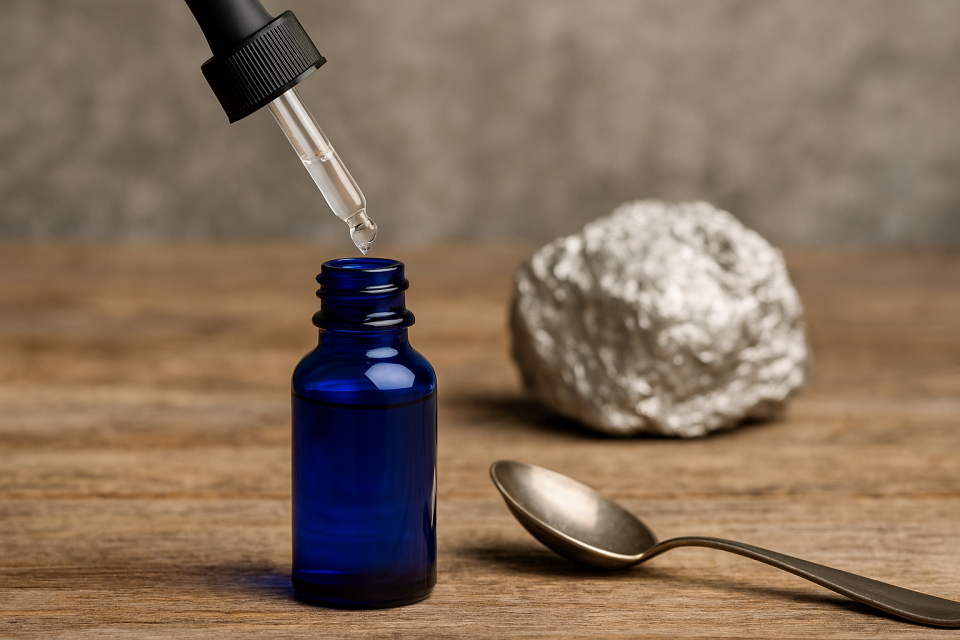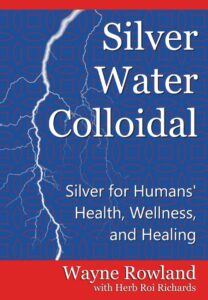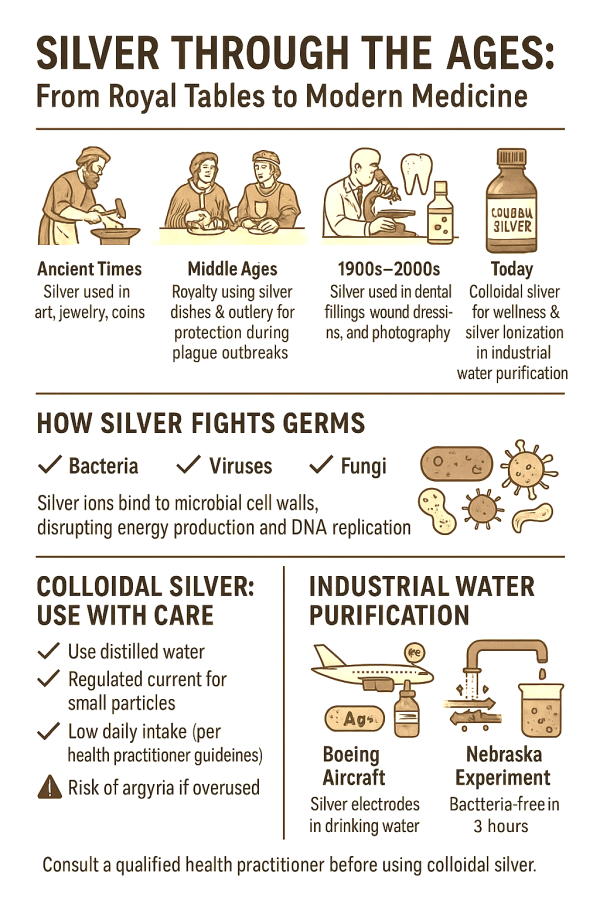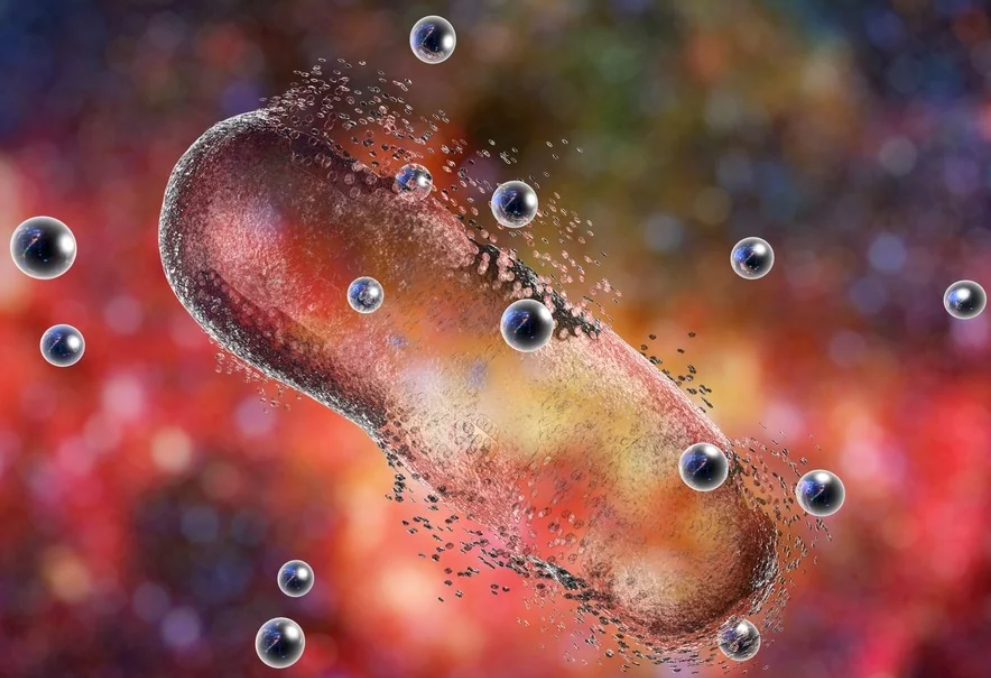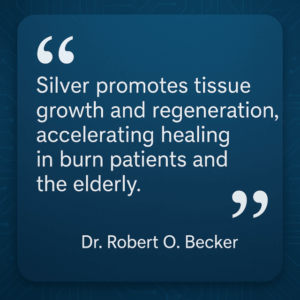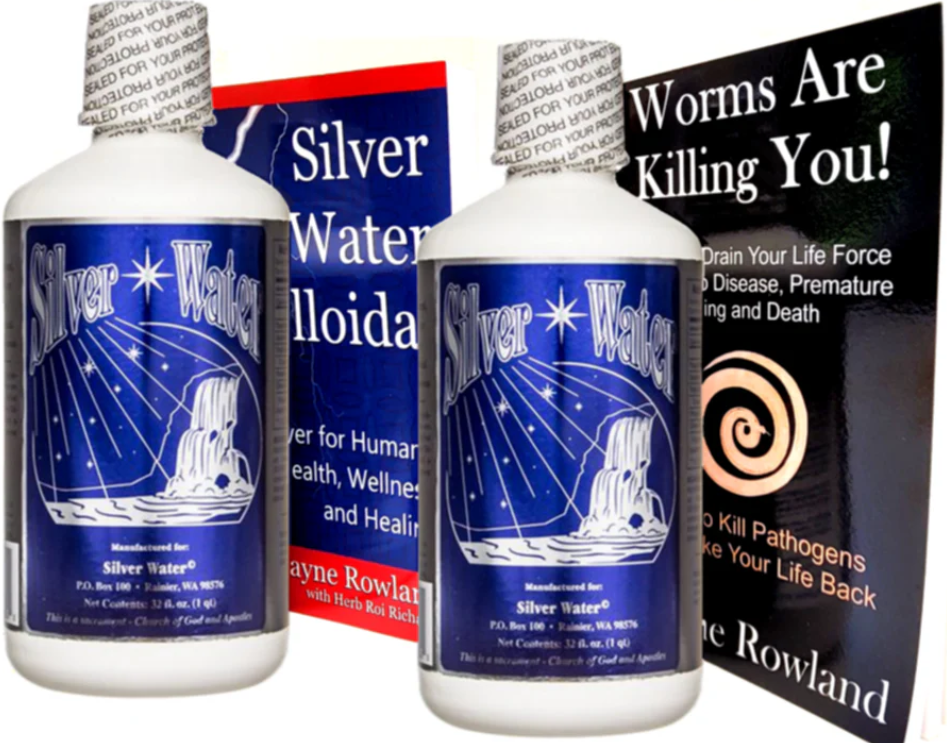Silver is far more than just a shiny metal used in jewelry and fine dining. Beneath its elegant appearance lies a powerful agent against harmful microbes, one that has been recognized for centuries, yet is only recently being explored more deeply for its health-supporting properties.
What Is Silver?
Silver is classified as a heavy metal, though not in the sense that it’s dangerous like lead or mercury. Instead, it’s renowned for its unique qualities: a bright, white appearance and the ability to reflect light exceptionally well. One remarkable feature of silver is how malleable it is. A single ounce of silver can be hammered into an ultra-thin sheet covering over 100 square feet, a technique artisans have known for thousands of years.
Historically, silver found its way into art, cutlery, kitchenware, dentistry, mirrors, and photography. But over the past two centuries, the Western world began to recognize silver’s role in medicine and hygiene, especially in the form of colloidal silver, a suspension of tiny silver particles in water.
Silver’s Role in Surviving the Black Death
During the bubonic plague outbreaks that devastated Europe, a curious observation surfaced: royalty and the upper class survived at much higher rates than the general population. While better living conditions may have played a part, researchers later discovered another factor: silver. Wealthy families used silver dishes, goblets, and cutlery. When they ate acidic foods like fruits or stews from these silver vessels, tiny amounts of silver dissolved into their meals.
Though not colloidal in the scientific sense, these microscopic silver traces likely helped kill harmful bacteria, fungi, and viruses they ingested, offering a primitive form of microbial protection long before antibiotics existed.
Scientific Confirmation of Silver’s Antimicrobial Power
By the late 18th century, as germ theory developed, researchers began testing silver’s ability to kill pathogens. Time and again, silver emerged as a potent killer of bacteria, fungi, and viruses. This laid the groundwork for modern colloidal silver solutions designed specifically for health applications.
Argyria: The Risk of Overuse
While silver can be helpful, too much of it, especially in improperly made colloidal solutions, can lead to argyria, a rare condition where silver particles lodge under the skin. This results in a permanent bluish-grey tint, particularly noticeable around the eyes and fingernails. Some believe this unusual skin tone is the origin of the phrase “blue bloods” used to describe royalty.
One modern example is Stan Jones, an American politician who gained media attention for his blue-grey skin. He had consumed four to six glasses of high-concentration colloidal silver daily, far beyond recommended usage, highlighting the importance of moderation and proper preparation.
Safe Production and Use of Colloidal Silver
Not all colloidal silver is created equal. The best solutions are made using distilled water and carefully regulated electrical current to create small, stable silver particles. Using tap water instead of distilled water leads to impurities like silver chloride, which can form large clumps that are harder for the body to eliminate and may contribute to argyria.
As Herb Roi Richards, PhD, explains:
“Using low-voltage battery power to make colloidal silver can result in larger silver particles, which may not remain suspended effectively and could accumulate in tissues. Over time, excessive ingestion of such silver can lead to argyria. To produce smaller, more stable silver particles, a controlled power source with regulated current is recommended.”
Industrial Uses: Water Purification and Beyond
Silver’s germ-fighting abilities are not limited to personal health. Boeing, for example, uses silver electrodes in some of its aircraft water systems to keep drinking water clean during long flights. Silver has also replaced chlorine in some swimming pools overseas, providing crystal-clear water without the stinging eyes or harsh chemicals.
A dramatic demonstration in Nebraska highlighted the power of silver. Researchers pumped 250 liters of raw sewage into a pool, where the E. coli count measured a staggering 7,000 bacteria per 100 milliliters. After running the sewage water through a silver electrode purification system, all bacteria were eradicated in under three hours. Follow-up tests confirmed the water remained bacteria-free.
Silver: A Metal for Modern Wellness
From royal banquets during the plague to high-tech water purification systems today, silver continues to protect people against harmful microbes. Colloidal silver, when properly made and used responsibly, is one of the many ways we can harness this ancient metal’s power to support modern health.
As with any health supplement, moderation and education are key. Silver’s ancient past and its promising future remind us that sometimes, the simplest elements of nature hold the most powerful solutions.
References
-
- Historical Uses of Silver
- Watts, D. J. (1997). The Royal Use of Silverware During the Bubonic Plague. Journal of Medieval Medicine.
- Lansdown, A. B. G. (2010). A Pharmacological and Toxicological Profile of Silver as an Antimicrobial Agent in Medical Devices. Advances in Pharmacological Sciences, 2010.
- Antimicrobial Properties of Silver
- Russell, A. D., & Hugo, W. B. (1994). Antimicrobial activity and action of silver. Progress in Medicinal Chemistry, 31, 351-370.
- Silver, S. (2003). Bacterial silver resistance: molecular biology and uses and misuses of silver compounds. FEMS Microbiology Reviews, 27(2-3), 341-353.
- Argyria and Overexposure Risks
- Fung, M. C., & Bowen, D. L. (1996). Silver products for medical indications: risk-benefit assessment. Journal of Toxicology: Clinical Toxicology, 34(1), 119-126.
- Case study: Stan Jones (Various media outlets, 2002–2008).
- Industrial Water Purification
- Boeing Technical Journal (2012). Silver Ionization for Water Disinfection in Aerospace Applications.
- Nebraska Water Purification Study (1999). Silver Electrode Treatment of Sewage Water. Environmental Protection Reports.
- Production of Safe Colloidal Silver
- Richards, H. R. (2023). Colloidal Silver Production: Best Practices for Safety and Efficacy. Personal communication and publications.
- Historical Uses of Silver
